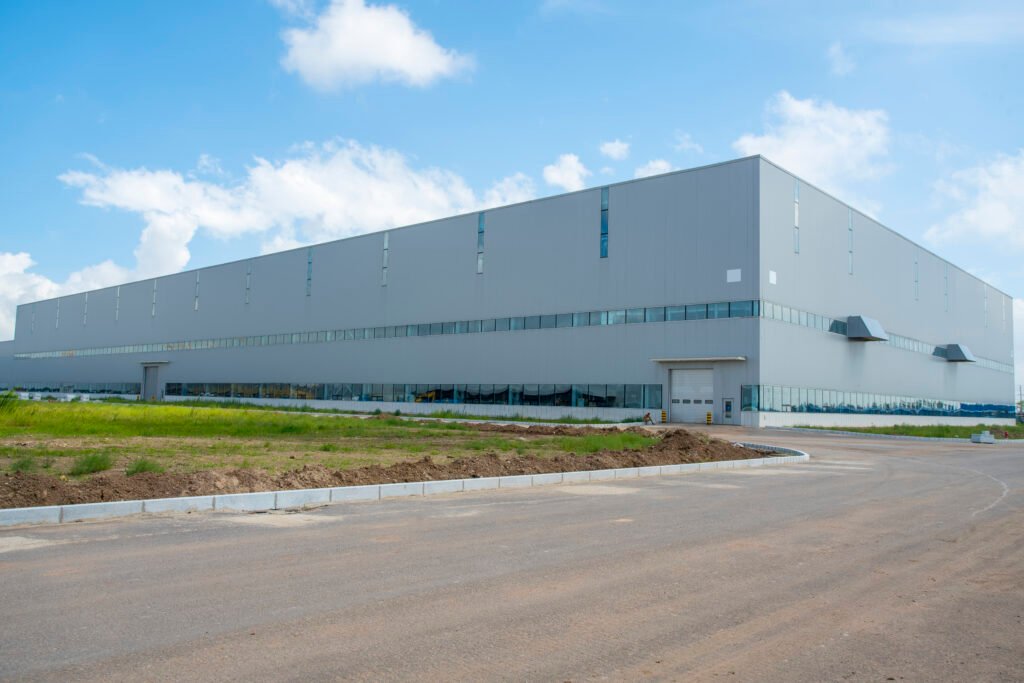
Explore the key aspects of warehouse construction & design, from prefabricated structures to AI-driven automation. Learn how Masmk Associates
Introduction: The Growing Importance of Warehouse Construction & Design
In today’s fast-paced supply chain landscape, efficient warehouse construction and design play a crucial role in optimizing operations, reducing costs, and enhancing productivity. Whether you’re a retail giant, an e-commerce fulfillment center, or a logistics provider, building a well-planned warehouse ensures seamless inventory management and order fulfillment.
This article explores the best strategies for warehouse construction & design, touching on modern trends, automation, and innovative solutions to help businesses scale efficiently.
Key Considerations in Warehouse Construction & Design
1. Benefits of Prefabricated Warehouse Construction
- Faster Build Time: Prefabricated structures allow quick assembly, reducing construction time.
- Cost-Efficient: Prefab warehouses lower labor costs and material waste.
- Sustainability: Many prefabricated components are made from eco-friendly materials, supporting green initiatives.
2. Warehouse Design Strategies for Increased Productivity
- Optimized Layouts: Ensuring smooth workflow by designing efficient aisles and docking areas.
- Space Utilization: Implementing vertical storage solutions to maximize space.
- Automation Integration: Designing with robotics and conveyor systems in mind for streamlined operations.
3. How to Finance a New Warehouse Construction Project
- Bank Loans & Government Grants: Many financial institutions offer loans tailored for warehouse construction.
- Leasing vs. Buying: Consider leasing space before committing to large-scale warehouse investments.
- ROI Calculation: Understand how warehouse construction impacts long-term operational costs and efficiency.
4. The Importance of Ventilation in Warehouse Construction
- Temperature Control: Prevents overheating and ensures proper airflow.
- Moisture Management: Reduces mold growth and damage to stored goods.
- Improved Worker Comfort: Ensures a healthier work environment for employees.
5. Future Trends in Warehouse Design and Infrastructure
- Sustainable Warehousing: Use of solar energy and eco-friendly construction materials.
- Smart Warehouses: AI-driven inventory tracking, automated forklifts, and IoT-integrated storage solutions.
- Modular & Flexible Design: Warehouses designed for adaptability and future expansion.
The Role of Technology in Modern Warehouse Construction
1. How AI and Robotics Are Transforming Warehouse Management
- AI-Powered Inventory Tracking: Predict demand and manage stock efficiently.
- Automated Picking Systems: Robotics minimize human error and speed up fulfillment.
- Data-Driven Operations: AI enhances real-time decision-making and warehouse optimization.
3. The Role of IoT in Warehouse Automation and Logistics
- Smart Sensors: Monitor storage conditions and equipment performance.
- Connected Supply Chains: Seamless communication between suppliers, warehouses, and distribution centers.
- RFID Tracking: Improves inventory accuracy and theft prevention.
Why Choose Masmk Associates for Your Warehouse Construction Needs?
At Masmk Associates, we specialize in designing and constructing state-of-the-art warehouses tailored to business needs. Whether you’re looking for a cost-effective prefabricated warehouse or a fully automated logistics hub, we offer end-to-end solutions that ensure efficiency, sustainability, and scalability.
Get Started Today!
Looking for expert warehouse construction & design services? Visit Masmk Associates today and transform your warehousing operations!
Final Thoughts Warehouse construction and design require a strategic approach to ensure long-term efficiency and cost-effectiveness. By integrating modern design strategies, advanced technology, and sustainable solutions, businesses can build future-proof warehouses that drive productivity and profitability.
Stay ahead in warehousing with the right construction and design strategies—and partner with experts like Masmk Associates to make your vision a reality!
